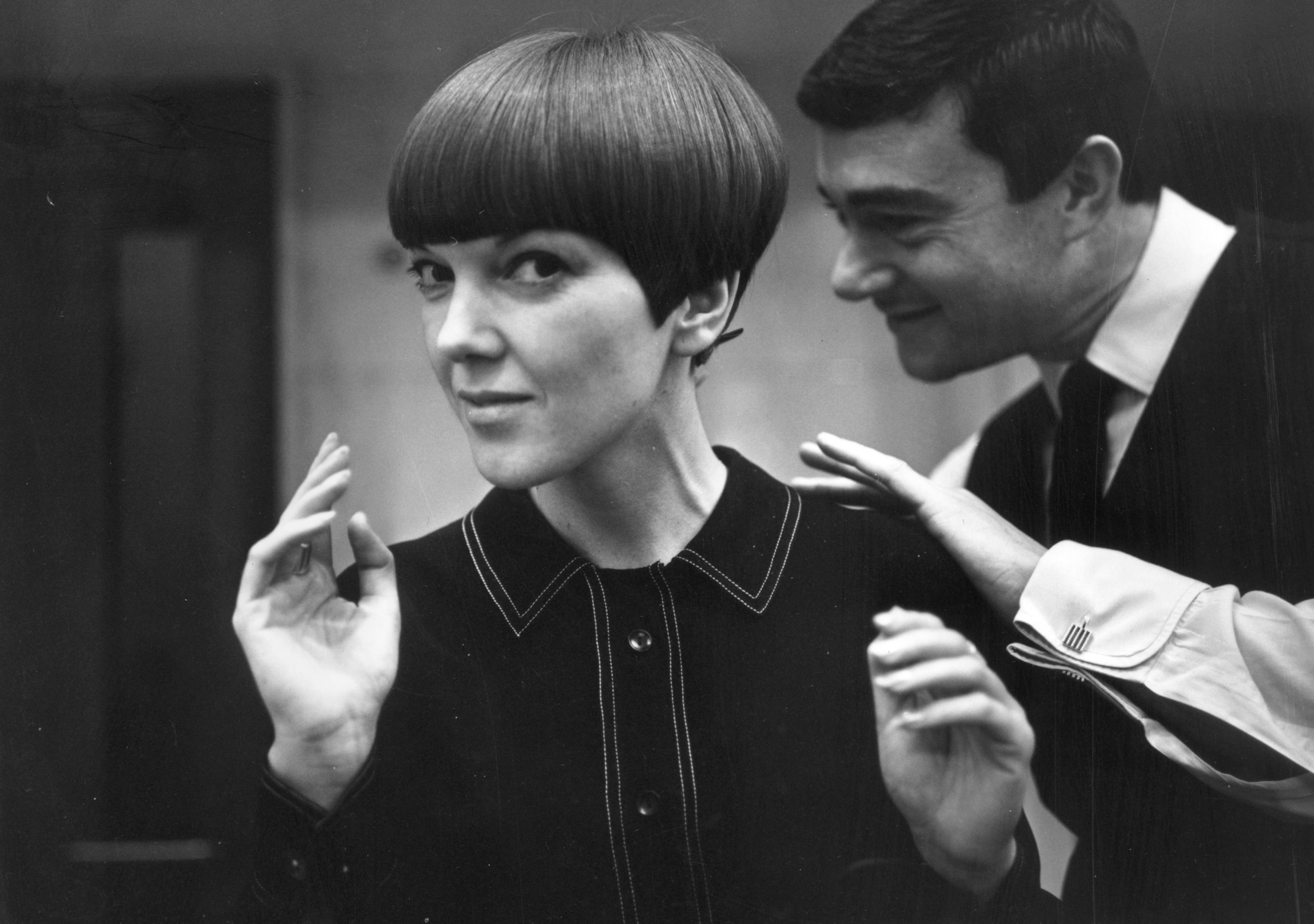Mary Quant selecting fabric, 1967 © Rolls Press/Popperfoto/Getty Images
Being based off the Kings Road, we at The Amazing Blog can still see today the influence the British iconic designer Mary Quant has in not only high street fashion, but also in the lifestyle and her rebellion against conformity as part of the Chelsea Set. Mary Quant was the one who really made London swing in the early 1960s. Quant’s tiny boutique Bazaar on the King’s Road grew into a wholesale brand available in department stores across the UK. Quant’s success soon hit America, where her designs were made for chain stores and mail order companies. So, when we heard that The Victoria and Albert Museum was holding an exhibition in honor of Dame Mary Quant, we knew that it was a date for the diary. We just have to see her original mini skirts and hot pants in real life all of which were made famous by the model Twiggy.
Mary Quant and models at the Quant Afoot footwear collection launch, 1967 © PA Prints 2008
The exhibition will showcase a range of Quant’s 200 garments and accessories, including some personal, unseen pieces, spanning from the years 1955 through to 1975. A range of vibrant tights, hot pants, theatrical makeup and her renowned miniskirts will be available for display to the public for the first time in almost 50 years. It will also seek to delve into how Quant’s contributions of garments, accessories and even her retail practices completely “revolutionised the high street” yes, fashion as we know it today.
Satin mini-dress and shorts by Mary Quant, photograph by Duffy, 1966 © Duffy Archive
Since her opening of her shop Bazaar on King’s Road in 1955, Quant aimed to liberate women from constraining clothes to include more youthful and eccentric pieces especially during the ‘Swinging Sixties.’ Her mock turtlenecks, A-line shift dresses, pant suits and use of PVC shifted the way women thought about fashion. Her look was completed by a liberating short geometric haircut by Vidal Sassoon, who freed women from the punishment of spending hours with curlers and under a hair-drying bonnet. Dame Mary Quant observed: “Vidal Sassoon, the pill and the miniskirt changed everything for the better in the 1960’s”.
Mary Quant, photograph by Ronald Dumont, c.1967. © Ronald Dumont/Stringer/Getty Images
Tickets for Mary Quant’s exhibit are now available for purchase, which runs from 6 April 2019 – 8 March 2020, on the V&A website here.



